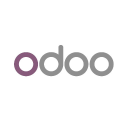I Started A $1M/Year Software Development Agency After Moving From Venezuela To Miami
Hello! Who are you and what business did you start?
My name is Angel Lacret, I’m the CEO and Founder of Cobuild Lab. We are a company that partners with industry experts to create Custom Software Solutions, Artificial Intelligence, and IoT.
Cobuild Lab started 5 years ago from previous clients that I had. Then I moved to Miami from Venezuela and formalized the business.
I started here on my own, but with a team back in Venezuela. Now I have a co-founder, 5 full-time employees in Miami, and close to 50 remote full-time workers all over the world.

What's your backstory and how did you come up with the idea?
I’m a Software Engineer doing software development for over 15 years now. I started my first 4 years in corporate and discovered the startup world.
I...

Download the report and join our email newsletter packed with business ideas and money-making opportunities, backed by real-life case studies.

Download the report and join our email newsletter packed with business ideas and money-making opportunities, backed by real-life case studies.

Download the report and join our email newsletter packed with business ideas and money-making opportunities, backed by real-life case studies.

Download the report and join our email newsletter packed with business ideas and money-making opportunities, backed by real-life case studies.

Download the report and join our email newsletter packed with business ideas and money-making opportunities, backed by real-life case studies.

Download the report and join our email newsletter packed with business ideas and money-making opportunities, backed by real-life case studies.

Download the report and join our email newsletter packed with business ideas and money-making opportunities, backed by real-life case studies.

Download the report and join our email newsletter packed with business ideas and money-making opportunities, backed by real-life case studies.



















